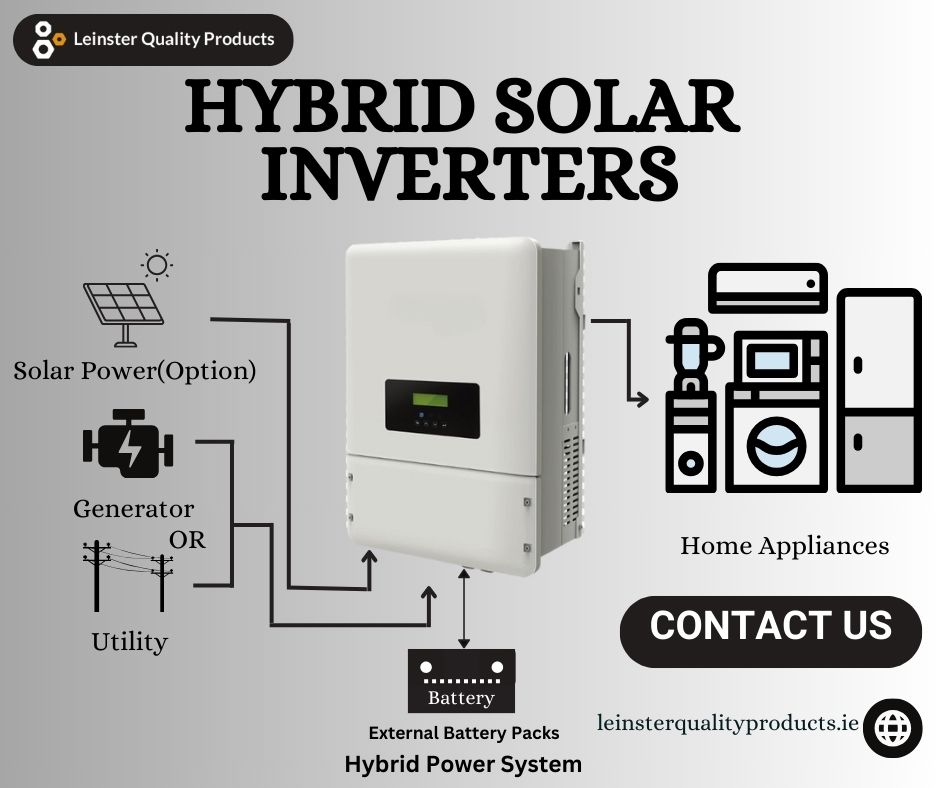
When it comes to renewable energy systems, storage inverters play a crucial role in ensuring maximum energy efficiency. But what exactly are storage inverters and why are they so important? Let's dive in and explore the world of these innovative devices.
A storage inverter is a device that converts direct current (DC) electricity produced by solar panels or wind turbines into alternating current (AC) electricity, which can be used to power our homes and businesses. Its primary purpose is to manage the flow of electricity between the renewable energy source and the electrical grid.
In renewable energy systems, storage inverters act as the bridge between the power generated by solar panels or wind turbines and the energy demands of our daily lives. They ensure a smooth transfer of electricity, enabling us to harness the clean energy provided by these sources.
Storage inverters are not just about converting DC to AC; they also optimize the performance of renewable energy systems. By regulating voltage levels, monitoring energy output, and managing battery storage, storage inverters maximize energy efficiency while minimizing wastage. This means we can make the most of every watt of clean energy generated, reducing our reliance on fossil fuels and lowering our carbon footprint.
So, whether it's powering your home with solar panels or harnessing wind energy for your business, storage inverters are an essential component in making renewable energy systems more efficient and sustainable. Now that we understand their purpose, let's delve into the different types of storage inverters available.
When it comes to storage inverters, there are several types available in the market. Each type has its own unique features and benefits. Let's take a closer look at the different types of storage inverters:
Battery-based inverters, also known as hybrid inverters, are specifically designed for energy storage systems. These inverters work in conjunction with batteries to store excess energy produced by renewable sources like solar or wind power.
Battery-based inverters follow a three-step process:
Charging: When renewable energy sources produce more electricity than is currently being consumed, the excess energy is stored in batteries connected to the inverter.
Discharging: When there is a demand for electricity that exceeds the current production from renewable sources, the battery-based inverter converts the stored DC electricity back into AC electricity for immediate use.
Grid Interaction: If the battery is fully charged and there is still excess energy, the battery-based inverter can send the surplus electricity back to the grid.
Using battery-based inverters in renewable energy systems offers several advantages:
However, there are also some disadvantages to consider:
In conclusion, understanding the different types of storage inverters is crucial when designing a renewable energy system. Each type offers its own set of advantages and disadvantages, so it's important to choose the one that best fits your specific needs and budget. Battery-based inverters, in particular, provide the added benefit of energy storage and backup power capabilities.
Proper installation procedures for storage inverters are crucial to ensure optimal performance and longevity. Here are some key steps to follow during installation:
Site Assessment: Before installation, conduct a thorough site assessment to determine the best location for the inverter. Factors such as shading, temperature, and accessibility should be considered.
Electrical Connections: Ensure that all electrical connections are properly made and secure. This includes connecting the inverter to the battery bank and the solar panels.
Safety Precautions: Follow all safety guidelines during installation, such as wearing protective gear and ensuring proper grounding to prevent electrical hazards.
Regular maintenance and inspections play a vital role in extending the lifespan of storage inverters and preventing potential issues. Here are some maintenance practices to consider:
Troubleshooting common issues with storage inverters can help resolve minor problems before they escalate. Some common issues include:
By following proper installation procedures, performing regular maintenance, and troubleshooting common issues, you can maximize the efficiency and lifespan of your storage inverter.
Remember, investing the time and effort into the installation and maintenance of your storage inverter will pay off in the long run, ensuring reliable and efficient operation for years to come.
Investing in high-quality storage inverters and following proper installation procedures will help minimize downtime and maximize the benefits of renewable energy systems. By harnessing the power of storage inverters, we can contribute to a greener and more sustainable future. Leinster Quality Products offers state-of-the-art, lightweight products that are both reliable and high-quality. Get in touch with Leinster Quality Products today and take a step towards a greener future! Let's power up with quality inverters together!